Exploring the Wonders of Glitter Shaker Bottles

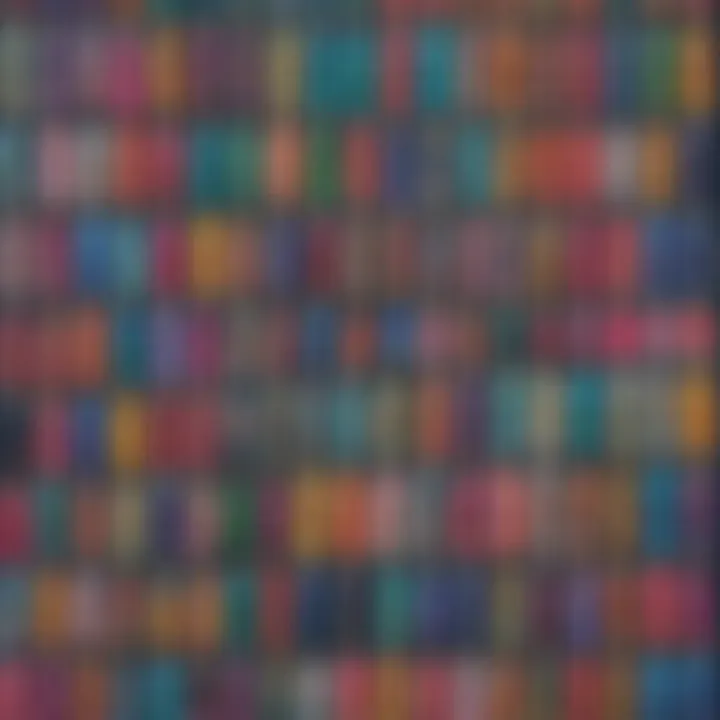
Intro
Glitter shaker bottles are not just colorful objects filled with sparkling material. They hold the potential for education and creativity, especially in settings where young minds are eager to explore the world of science. This article will provide an in-depth look at these fascinating tools, explaining their design, uses, and the scientific principles behind them. By diving into the world of glitter shaker bottles, we aim to engage children, parents, and caregivers in hands-on learning that combines both art and science.
Science Fun Facts
Glitter has more to it than just looks. When paired with a shaker bottle, it becomes a pathway to inquisitive learning. Here are some fun trivia and facts to pique your interest:
- The origins of glitter: Glitter has a long history. It has been used since ancient times to adorn objects and surfaces. Originally made from small pieces of glass or minerals, modern glitter is typically made from plastic.
- Why things sparkle: The sparkle we see in glitter results from the way light interacts with its surfaces. The reflection and refraction of light create that shimmering effect, making glitter visually appealing.
- Mixing colors and light: When different colored glitters are combined, they can create new colors. This simple act can trigger discussions about color theory and light physics.
Glitter shaker bottles can act as both art supplies and scientific tools, sparking creativity and curiosity simultaneously.
Discover the Wonders of Science
These simple bottles can illustrate numerous scientific concepts in an engaging manner. Here are a few areas where glitter shaker bottles shine:
- Exploring density: By mixing different liquids in a glitter shaker, children can see how liquids of varying densities behave differently. This observation leads to basic principles of physics and chemistry.
- The scientific method: Shaker bottles provide a platform for hypothesis-driven experiments. Children can predict how different glitters will react with various liquids and then test their predictions.
Interactive Learning Tools
Interactive learning can enhance understanding. Simple experiments with glitter shaker bottles can encourage young learners to experiment and ask questions.
- Hands-on activities invite learners to engage creatively. Setting up an experiment asks them to design their own shaker bottles with varied materials.
Real-Life Applications of Science
Beyond the classroom, these experiments can relate to everyday life. Discussing why the glitter sinks or floats can lead to conversations about the physical properties of materials. The excitement of crafting their own scientific tools provides a memorable experience.
Science Quiz Time
To reinforce learning, quizzes can provide a fun way to assess understanding. Here are some suggestions:
- Multiple choice questions about glitter and light can challenge their knowledge and spark new questions.
- Brain teasers related to density and buoyancy can stimulate critical thinking and problem-solving skills.
Interactive Quizzes
Providing a digital quiz format can appeal to tech-savvy learners. Platforms like Reddit may host communities where users share science-related quizzes, enhancing engagement.
Science Experiment Showcase
Experiments using glitter shaker bottles are simple yet effective. Here’s a basic framework for a fun activity:
Fun and Engaging Experiments
- Density Experiment
- Observing Reactions
- Materials: Clear glitter shaker bottles, various liquids (water, oil, syrup), and assorted glitters.
- Instructions: Fill the bottle with one of the liquids. Add different components of glitter and observe.
- Materials: Glitter, vinegar, baking soda.
- Instructions: A step-by-step guide leads students through mixing ingredients in a safe manner, promoting responsibility and safety.
Safety Tips and Precautions
- Always supervise young children during experiments.
- Ensure all materials used are non-toxic and safe for handling.
The End
Glitter shaker bottles are more than just artistic tools; they are gateways to exploration and learning. By engaging with these vibrant vessels, children can learn core scientific principles while channeling their own creativity. As parents and caregivers foster this curiosity, glitter shaker bottles will likely remain a favorite tool in the educational toolkit.
Understanding Glitter Shaker Bottles
Glitter shaker bottles have become an intriguing subject in both artistic and educational spheres. The multifunctional nature of these bottles makes them important tools for exploration and creativity. Understanding how they work can enhance not only their creative uses but also their application in teaching various scientific concepts. In this context, it is vital to examine their definition and basic functionality before delving into their components.
Definition and Basic Functionality
A glitter shaker bottle is essentially a container filled with glitter and a liquid medium. The primary function of this item is to provide an engaging way to introduce concepts like density, motion, and even artistic expression. When the bottle is shaken, the glitter moves through the liquid, creating a beautiful visual display. This movement can be used to demonstrate principles of physics, such as fluid dynamics and inertia, making it a valuable resource for educators.
Components of a Glitter Shaker Bottle
For a better understanding of glitter shaker bottles, one must consider the three main components: container type, glitter variety, and liquid medium. Each of these components contributes uniquely to how effectively the bottle functions and serves its purpose in both teaching and creative contexts.
Container Type
The container serves as the foundation of the glitter shaker bottle. Common options include plastic, glass, or even recycled jars. Plastic containers are lightweight and less breakable, making them a popular choice, especially for educational settings where safety is a priority. On the other hand, glass containers offer a more aesthetic appeal and can provide a clearer view of the glitter's movement.
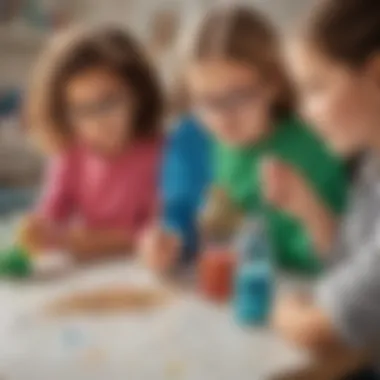
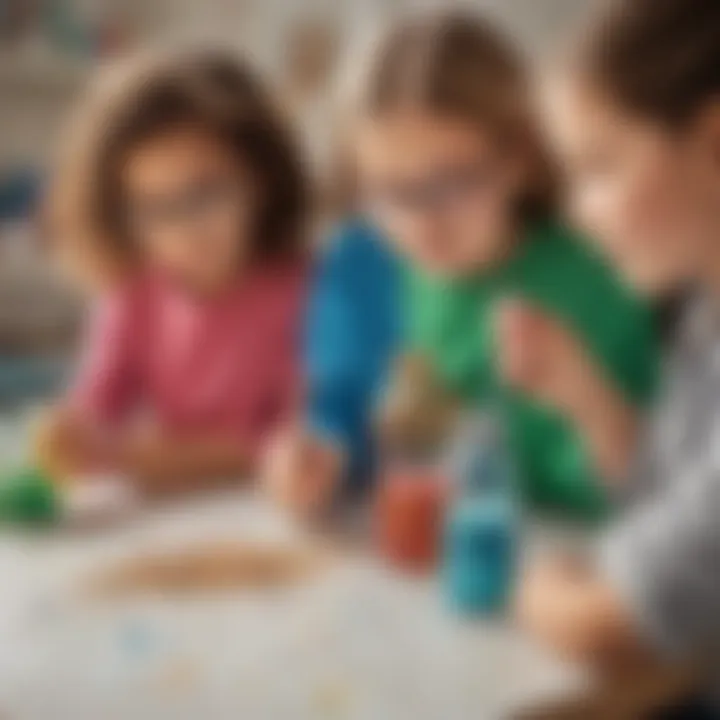
The advantage of using plastic containers is their durability, which allows for reuse in different activities. However, glass containers can sometimes provide a more engaging visual effect.
Glitter Variety
Glitter comes in various types, including fine, chunky, and themed glitter. Fine glitter provides a smooth shimmer effect, while chunky glitter creates a more textured look. Choosing the right type is essential depending on the project's objective. Fine glitter is often used in designs that require precision, while chunky glitter is utilized in craft projects where a bold appearance is desired.
The versatility of glitter variety not only adds aesthetic appeal but also serves pedagogical purposes. Different glitters can demonstrate how varying sizes affect movement through the liquid medium.
Liquid Medium
The liquid medium is a crucial element that influences the behavior of glitter within the shaker. Common choices include water, glycerin, or various oils. Each liquid has unique properties affecting viscosity and density, which in turn influences how glitter moves. For example, using glycerin creates a slow and mesmerizing motion, while water allows for quicker movement.
The selection of liquid medium can dramatically affect the educational and artistic outcomes. Glycerin-based mediums can be useful for demonstrating principles of density and viscosity, making them a popular choice for comprehensive learning experiences.
In summary, understanding glitter shaker bottles involves a deep dive into their components and functionality. The combination of materials like container type, glitter variety, and liquid medium creates numerous possibilities for both creative endeavors and educational explorations. By unraveling these aspects, we lay the groundwork for examining the more intricate scientific principles underlying their mesmerizing sparkle.
The Science Behind the Shimmer
The exploration of glitter shaker bottles delves deep into the scientific principles that allow them to create mesmerizing effects. This section emphasizes how understanding the science behind these bottles not only enhances creativity but also empowers young learners to grasp complex scientific concepts through practical application. By uncovering the connections between glitter, liquid, and density, we encourage curiosity and experimentation.
Understanding Suspension and Density
Suspension refers to a mixture in which solid particles are dispersed throughout a liquid. In glitter shaker bottles, glitter particles are suspended in liquid, often water or glycerin. Density plays a crucial role here. The glitter typically has a lower density than the liquid medium, allowing it to float mid-level rather than sink immediately.
Children can observe that when the bottle is shaken, the glitter dances around, settling back down after motion ceases. This phenomenon is a good demonstration of density and buoyancy, making it easier to visualize these concepts. Young students can learn hands-on about how different substances interact and understand why some materials float and others do not.
The Role of Viscosity
Viscosity is the measure of a fluid’s resistance to flow. A liquid with high viscosity, like glycerin, is thicker and moves more slowly. In the context of glitter shaker bottles, viscosity affects how the glitter moves. While using a low-viscosity liquid (like water), the glitter might fall quickly. But with a high-viscosity liquid, the glitter glides and moves gradually.
This quality can be tailored for various teaching moments. For instance, educators can compare the movement in different liquids or even mix substances to create customized shakers. This practical activity reinforces physics concepts and allows deeper engagement with scientific principles.
Color Mixing and Optical Effects
Another fascinating aspect of glitter shaker bottles is the color mixing and optical effects they offer. Glitter comes in a variety of colors and sizes, which can create dazzling visual displays when mixed. When light hits the glitter, it reflects in various ways, resulting in a spectrum of colors.
This provides an educational opportunity to discuss light behavior, such as reflection and refraction. Children can experiment with different glitter types to observe how mixing overlapping colors can produce unexpected outcomes. This encourages exploration that merges art with science by examining how colors combine, which is relevant in both chemistry and visual arts.
Creative Uses in Educational Settings
In the realm of education, glitter shaker bottles present unique opportunities for exploration and creativity. They serve as engaging tools that can enhance learning experiences across different subjects. The sparkle and movement of glitter when shaken captures attention, making it easier for students to engage with the material. Using these bottles in a classroom can foster curiosity and support hands-on learning.
The creative uses of glitter shaker bottles extend beyond mere decoration. They can play an important role in art projects, scientific experiments, and interactive activities, making abstract concepts more tangible. Through these methods, educators can highlight the interconnectedness of science, art, and mathematics.
Art Projects and Crafts
Glitter shaker bottles are excellent resources for art projects and crafts in educational settings. Children find joy in crafting their own unique designs using glitter. This promotes creativity and fine motor skills, which are essential at this age.
In addition, projects involving glitter shakers can be integrated into various themes, such as holidays or nature. For example, creating a winter scene with iridescent glitter or crafting a birthday celebration shaker adds a personal touch to art pieces. As students create, they can learn about color mixing and design principles, enriching their understanding of art.
Demonstrating Scientific Concepts
Educators can effectively use glitter shaker bottles to illustrate scientific principles. This is particularly beneficial for young learners, who often grasp concepts more easily through visual examples.
Separation Techniques
Separation techniques can be demonstrated using glitter shaker bottles. In this context, glitter represents different materials suspended in a liquid. Students can observe how various types of glitter settle over time, showcasing how separation occurs in nature. This visual aid helps explain concepts such as density and buoyancy.
The key characteristic of separation techniques lies in showing that different materials have distinct behaviors when mixed. This observation can be both eye-catching and insightful, making it a popular choice for educators teaching basic science concepts. One disadvantage might be the limited range of materials that can be accurately depicted with glitter; however, it still serves as a vivid example for elementary students.
Matter States
Using glitter shaker bottles, educators can also explore the states of matter. By varying the liquid medium—such as water, oil, or a thicker gel—students can see firsthand how each medium affects the movement and behavior of the glitter. This can lead to a discussion about solid, liquid, and gas states.
The benefit of teaching about matter states using glitter is that students can visualize differences in how substances interact. Although this method is simple, the impact on students can be profound. The clarity of this method of teaching does come with a limitation; it may not cover all complexities of matter states but provides a basic understanding suitable for elementary education.
Interactive Learning Experiences
Involving glitter shaker bottles in interactive learning experiences encourages collaboration. For instance, students can partner to create their own shaker bottles, deciding which colors and materials to combine. Such hands-on activities not only strengthen social skills but also deepen understanding of scientific concepts.
Additionally, the process of shaking and observing the movement of glitter can lead to discussions and questions among peers. This kind of inquiry-based learning fosters critical thinking. These interactive experiences make the learning process not just educational, but also enjoyable. Ultimately, glitter shaker bottles transform the classroom into a space of discovery.
Safety Considerations
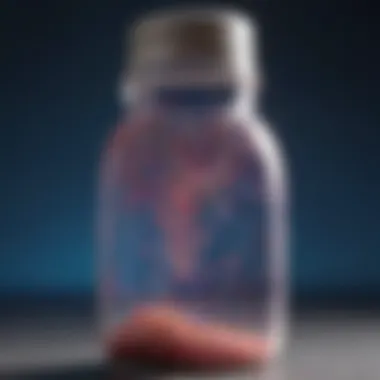
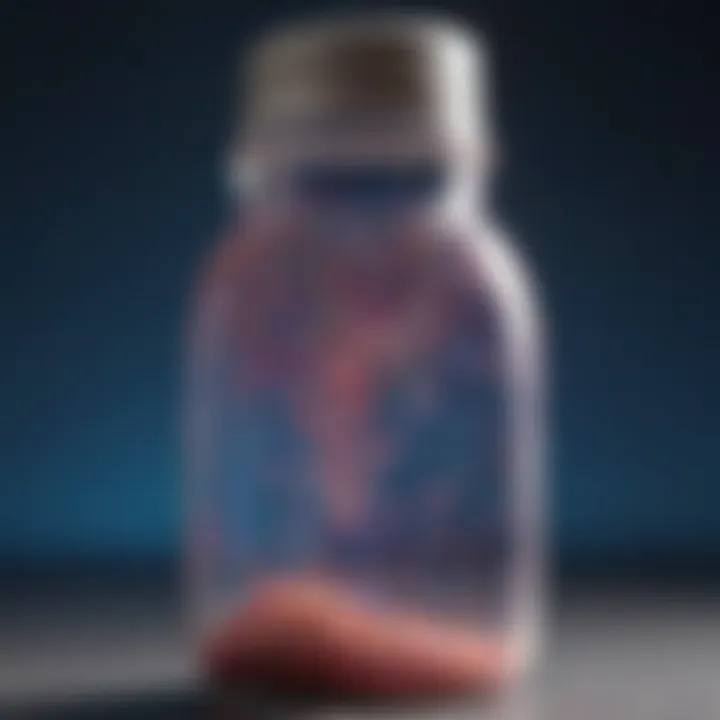
Safety is an essential aspect when discussing glitter shaker bottles, especially in educational contexts where children are involved. These bottles can serve as delightful tools for learning and creativity, but ensuring the well-being of the young users is paramount. This section will explore material safety and the importance of usage precautions.
Material Safety
When selecting glitter shaker bottles for educational purposes, it is crucial to consider the materials used in both the bottle and the contents. Most commercially available glitter is made from plastic, which can pose a risk if ingested. Opting for non-toxic glitters is necessary to protect children from potential harm. Additionally, the bottles should be made from BPA-free plastics. These choices significantly minimize health risks. Always look for procurement options that meet safety standards.
Educators and parents should also pay attention to the labels of glitter products. Some may not clearly indicate their safety for children, and proactive inquiry about allergens or harmful substances should be undertaken.
Key Points on Material Safety:
- Choose non-toxic glitter.
- Use BPA-free containers.
- Review allergen information on labels.
Usage Precautions for Children
While glitter shakers can inspire creativity, using them requires certain precautions to ensure a safe learning environment. Here are some important guidelines to consider when children engage with these tools:
- Supervision: Adult supervision is essential any time children handle glitter shakers. This ensures that they use them properly and understand the boundaries regarding safe play.
- Age Appropriateness: Align activities involving glitter shakers with the developmental age of the children involved. For younger kids, consider using larger components that they cannot choke on.
- Clear Instructions: Provide written or verbal instructions for any activity that involves glitter shakers. Explain safe handling to prevent spillage or accidental ingestion.
- Cleaning Up: Ensure that children understand the importance of cleaning up after using glitter. This is not only a good practice but prevents small glitter pieces from becoming a choking hazard for younger siblings or pets.
"Safety first makes learning fun and secure."
By adhering to these precautions, parents and educators can create a safe and enjoyable atmosphere for learning with glitter shaker bottles. Implementing these strategies encourages responsible usage while nurturing creativity.
DIY Glitter Shaker Bottle Creation
The DIY Glitter Shaker Bottle Creation section emphasizes the hands-on approach to learning through crafting. This not only allows for creativity but also promotes engagement in scientific principles. By creating their own glitter shaker bottles, children can gain practical experience with concepts of density, liquid motion, and the interplay of colors. Also, DIY projects foster fine motor skills as kids learn to assemble and manipulate materials.
Moreover, crafting these bottles can serve as an excellent bonding experience between parents and children or educators and students. This kind of project enhances understanding through tactile learning, making scientific concepts come alive. While having fun, individuals develop patience and attention to detail—skills valuable in both educational and real-life scenarios.
Materials Required
To create a glitter shaker bottle, the following materials are necessary. Gather these items before starting to ensure a smooth crafting process:
- Empty plastic bottle: A clear plastic bottle with a secure lid, such as a water or soda bottle.
- Glitter: Various types of glitter can be used, such as fine glitter or larger confetti. Choose colors based on individual preference.
- Liquid medium: Common options include water, glycerin, or clear glue mixed with water. Each will create different effects on glitter movement.
- Food coloring: Optional, but adds visual interest. Choose colors that complement the glitter.
- Adhesive: Super glue or tape to secure the lid once the bottle is complete, preventing spills.
- Optional embellishments: Small beads or sequins for additional decoration.
Step-by-Step Instructions
Creating a glitter shaker bottle involves a straightforward process. Here are step-by-step instructions to guide you:
- Prepare the bottle: Start with a clean, empty plastic bottle. Remove labels and make sure it’s dry.
- Add the glitter: Pour a desired amount of glitter into the bottle. You can experiment with multiple colors for a striking effect.
- Mix liquid medium: Fill the bottle with your chosen liquid medium. Water works, but a mix of glycerin and water makes the glitter move slowly, creating a mesmerizing effect.
- Add food coloring: If desired, drop in a few drops of food coloring to add a colorful tint to your shaker. Adjust the amount based on how vibrant you want the color to be.
- Secure the lid: Carefully put the cap back on. Use adhesive to secure the lid, ensuring it won’t open during use.
- Shake and observe: Shake your bottle and observe the beautiful movements of glitter inside. Adjust the contents or add more medium if needed.
Experimenting with Variations
Once the basic glitter shaker bottle is assembled, several variations can enhance the learning and fun aspects. Here are a few ideas:
- Change the liquid: Use oils or different bases to alter the glitter movement. For example, vegetable oil will provide a different viscosity than water.
- Test different glitter types: Use holographic, metallic, or even glow-in-the-dark glitter for unique effects.
- Incorporate objects: Add small items such as beads or small toys to see how they interact with the glitter. Observe how different items float or sink.
- Make thematic shakers: Create shakers for holidays, seasons, or personal interests. For example, use red and green glitter for Christmas.
Exploring different variations allows the maker not only to enjoy crafting but also to delve deep into scientific experimentation at home or in class.
Through these steps, children can discover the balance between artistry and science. The joy of creating something simple yet beautiful inspires curiosity and deeper understanding of the physical world.
Incorporating Glitter Shakers into Curriculum
Integrating glitter shakers into educational curriculums enhances student engagement and promotes active learning. These tools can be utilized to cover various scientific concepts and encourage creativity. The tactile and visual elements of glitter shakers stimulate curiosity, making complex topics more accessible for young minds. While implementing glitter shakers may seem simple, their applications in education provide rich, multi-faceted learning opportunities that can cater to diverse learning styles.
Linking Science Topics
Physics
Physics plays a crucial role in understanding the underlying principles that govern the behavior of glitter in a shaker. The movement of glitter can illustrate concepts like motion, forces, and gravity. For instance, when students observe how glitter settles after shaking, they can discuss gravitational pull and its effects on different particles.
The dynamic nature of physics makes it a beneficial choice to incorporate in lessons involving glitter shakers. Through demonstrations and experiments, students can gain hands-on experience, deepening their comprehension of physical laws in a way that is tangible and engaging. Additionally, physics contributions lay a solid foundation for critical thinking and problem-solving.
Chemistry
Chemistry is another key area where glitter shakers can shine. The interaction of glitter with various liquids can serve to introduce topics such as solubility, density, and chemical reactions. By experimenting with different mediums, students can observe firsthand how certain materials behave when mixed.
The unique feature of chemistry in this context lies in its ability to highlight the components and changes in matter. This discipline encourages inquiry and experimentation, making it a fascinating avenue for young learners. Chemistry promotes analytical thinking, allowing students to hypothesize and investigate results, which aligns perfectly with the exploratory nature of using glitter shakers.
Cross-Disciplinary Applications
Art Integration
Art integration in education fosters creativity while reinforcing academic skills. Using glitter shakers in art projects can help students explore aesthetics, texture, and design. They can use glitter to enhance their artwork, assigning meaning and expression to their creations.
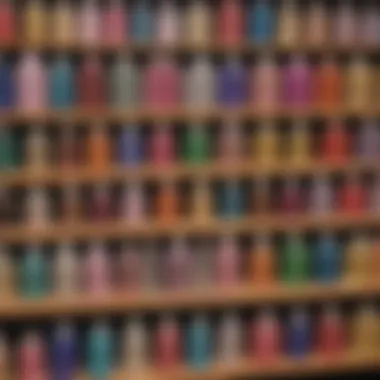

The key characteristic of art integration in education is its ability to connect visual expression with scientific exploration. This cross-disciplinary method encourages students to think beyond traditional subject boundaries. When students incorporate glitter shakers into their art, they also practice skills like planning, experimentation, and evaluation of their work, benefiting creativity and critical thinking.
Mathematics Involvement
Mathematics plays an essential role in exploring glitter shaker bottles, particularly in measurement and data analysis. Students can learn to measure the amount of glitter, liquids, and how varying these amounts affects the final outcome. This hands-on approach allows students to visualize mathematical concepts in real-world applications.
One of the distinctive features of mathematics involvement is its focus on numbers and patterns. Students can track, record and analyze their findings from glitter shaker experiments, enhancing their understanding of math in a practical context. This applied mathematics fosters a deeper comprehension of concepts that may otherwise seem abstract, bridging the gap between theory and practice.
Case Studies and Examples
The significance of this topic in the overall context of glitter shaker bottles cannot be overstated. Case studies offer practical insights, showing how glitter shaker bottles are more than just fun objects. They serve educational purposes, supporting various learning outcomes. By examining real-world scenarios, we can understand the diverse applications of glitter shaker bottles in learning environments.
In essence, the inclusion of case studies and examples enables educators, parents, and caregivers to see the tangible benefits these tools provide. They illuminate how glitter shakers can facilitate creativity and promote scientific inquiry. Instead of theoretical discussions, these case studies illustrate concrete strategies that have been successful in educational settings, enhancing the overall pedagogical approach.
Furthermore, analyzing exemplary implementations can guide others in utilizing these tools effectively. Educators can familiarize themselves with potential challenges and opportunities, refining their methods. The collective feedback from these instances can bolster confidence in integrating glitter shaker bottles into their curriculum.
Successful Classroom Implementations
Classroom implementations of glitter shaker bottles have proved effective in enhancing student engagement and comprehension in various subjects. One notable example comes from a second-grade class that used glitter shakers to explore basic principles of motion. Students created their own shakers, observing how the glitter moved through different liquids. This hands-on experience provided a clear demonstration of concepts related to speed and density. It was a unique way for students to physically see the effects of these principles rather than just hearing about them.
Another example is the integration of glitter shakers into art projects. A middle school art class utilized these bottles to study color mixing. By creating different glitter combinations, students not only practiced their artistic skills but also learned about the color wheel and complementary colors. This dual focus on art and science enriched their learning experience.
Feedback from Educators
Educator feedback highlights the successful role of glitter shaker bottles in classrooms. Teachers have noted increased student fascination when using these tools. One educator remarked, "Glitter shakers seem to capture attention better than traditional materials. Kids become excited to learn when they are involved in the process." This statement reflects the interactive nature of glitter shakers, which transform abstract concepts into tangible experiences.
Moreover, evaluation of their use has shown that students demonstrate higher retention rates when learning through hands-on activities. Several educators provided input indicating that traditional lecture methods often fell flat in comparison to the dynamic environment created by using glitter shakers.
Future Trends and Innovations
Understanding future trends and innovations in glitter shaker bottles is crucial for educators, parents, and caregivers. With the ongoing evolution in both materials and technology, these simple educational tools can become even more effective in sparking children's interest in science.
As we navigate this dynamic landscape, it is essential to consider how advancements can amplify the educational experience. Future designs will likely focus on improving safety, enhancing visual appeal, and integrating modern technology to enrich interactive learning.
Advancements in Materials
The materials used in glitter shaker bottles are undergoing significant changes. Traditional plastic containers are now often being replaced by more sustainable and safer alternatives. For instance, biodegradable materials are becoming popular as the focus on environmental impact grows. This change not only contributes to reducing plastic waste but also gives children insight into sustainability practices.
Furthermore, advancements in glitter formulations are impacting the overall user experience. Eco-friendly glitter, made from natural resources or biodegradable components, is gaining traction. Such materials can enhance the visual effects of the shaker while being less harmful to the environment.
The shift towards safer adhesives and seals ensures that the liquid medium remains contained, reducing the risk of spills. These changes reflect a broader trend in education that emphasizes the importance of safety alongside creativity.
Incorporating Technology
Integrating technology into the realm of glitter shaker bottles presents exciting opportunities for deeper engagement. For example, augmented reality applications could allow children to explore the scientific principles behind glitter phenomena. By scanning a glitter shaker bottle with a device, students could see visualizations that demonstrate concepts like suspension and density in real time.
Additionally, smart shaker bottles might include features such as LED lights that change colors based on the liquid medium inside. Such technological enhancements would not only hold children's attention but also spark curiosity about how technology and science intersect.
Some educational institutions are already experimenting with digital platforms that complement physical glitter shaker activities. Virtual labs could simulate various mixtures, letting children predict outcomes and experiment with different variables without the mess.
"Technology integration can enhance traditional educational tools, making science more accessible and engaging for students."
As we look ahead, the fusion of innovative materials and cutting-edge technology in glitter shaker bottles is set to transform educational experiences. This evolution aligns well with current teaching methodologies that prioritize hands-on learning and critical thinking. By embracing these trends, educators can create enriching experiences that inspire young minds.
End and Final Thoughts
The exploration of glitter shaker bottles presents an engaging intersection of creativity and science. These seemingly simple objects serve multiple purposes in educational settings. Understanding their design, functionality, and application can deepen both the interest and knowledge of young learners.
One important aspect is the ability of glitter shaker bottles to demonstrate scientific principles. The interaction of different materials helps illustrate concepts such as density, viscosity, and color mixing. By using glitter shaker bottles, educators can initiate discussions that connect art and science, encouraging students to think critically and creatively.
Moreover, the act of creating and experimenting with glitter shaker bottles offers a hands-on experience. This practical approach fosters active learning, which is often more impactful than traditional lecture-based methods. Children engage more deeply when they can directly manipulate materials and observe the results of their actions.
Educators and parents should consider glitter shaker bottles not just as playthings but as valuable tools for discovery. They provide a platform for children to explore their creativity while reinforcing foundational scientific concepts. Interest in interactive learning experiences can be encouraged by integrating these bottles into various educational contexts.
By cultivating curiosity and engagement through tools like glitter shaker bottles, we nurture a generation of inquisitive minds. In doing so, we emphasize the importance of exploration and experimentation in both science and art.
"Education is not preparation for life; education is life itself."
Summary of Key Points
- Glitter shaker bottles are tools that combine science and art.
- They demonstrate scientific concepts such as density, viscosity, and color mixing.
- These bottles promote hands-on learning experiences.
- Encouraging exploration through interactive activities can deepen engagement in scientific subjects.
- They serve as effective instruments for educators and parents alike in fostering creativity and curiosity.
Encouragement for Exploration
It is essential to encourage hands-on exploration in education. Glitter shaker bottles provide a unique opportunity for children to engage in learning through play. Introducing children to the basics of science while allowing them to create visually exciting crafts can be beneficial.
Parents and educators should invite children to experiment. Allow them to choose glitter colors, explore different liquid mediums, and observe the distinct effects created in their shaker bottles.
Additionally, discussions about what they see and how it relates to scientific concepts can enhance their understanding. This can also lead to a greater appreciation for the beauty of science and creativity, prompting them to discover more about the world around them. By fostering an environment of curiosity, we equip children with the tools they need for lifelong learning.







